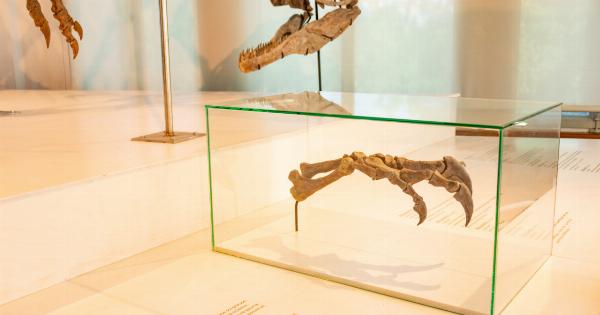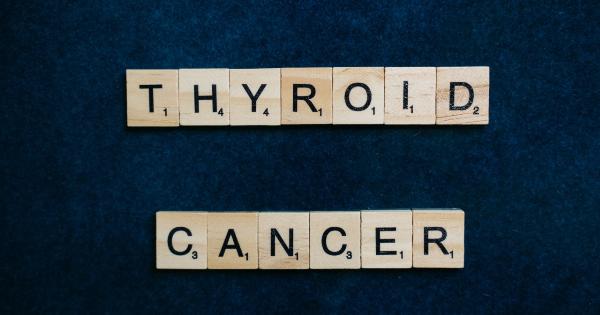Thyroid cancer is a prevalent form of cancer that affects the thyroid gland, a small butterfly-shaped gland located at the base of the neck.
While various treatment options are available, radioactive iodine therapy has emerged as an essential and effective tool in treating thyroid cancer. Radioactive iodine, also known as I-131, is a form of iodine that emits radiation and is selectively taken up by the thyroid gland.
This targeted therapy has revolutionized the management of thyroid cancer, significantly improving patient outcomes and prognosis.
Understanding Thyroid Cancer
Before delving into the role of radioactive iodine therapy in treating thyroid cancer, it is crucial to have a basic understanding of the disease itself. The thyroid gland plays a pivotal role in the regulation of metabolism in the body.
However, sometimes, cells in the thyroid can mutate and grow abnormally, leading to the development of thyroid cancer.
Thyroid cancer is broadly categorized into four main types:.
Papillary Thyroid Cancer
Approximately 80% of thyroid cancer cases are classified as papillary thyroid cancer. This type of cancer arises from the follicular cells in the thyroid gland and typically grows slowly.
Papillary thyroid cancer often has an excellent prognosis, especially when detected early and treated adequately.
Follicular Thyroid Cancer
Follicular thyroid cancer accounts for about 10-15% of thyroid cancer cases. It arises from the follicular cells as well but tends to be a bit more aggressive compared to papillary thyroid cancer.
The prognosis for follicular thyroid cancer largely depends on factors such as the patient’s age, the extent of the tumor, and whether it has spread to other parts of the body.
Medullary Thyroid Cancer
Medullary thyroid cancer originates from the C cells of the thyroid gland, which produce a hormone called calcitonin. This type of cancer represents around 5-10% of thyroid cancer cases.
Unlike papillary and follicular thyroid cancer, medullary thyroid cancer can have a familial component and may be associated with certain genetic syndromes. Early detection and timely treatment are crucial for managing this form of thyroid cancer effectively.
Anaplastic Thyroid Cancer
Anaplastic thyroid cancer is the rarest and most aggressive form of thyroid cancer, accounting for less than 2% of cases. It typically occurs in older individuals and is characterized by rapidly growing tumors that are difficult to treat.
Anaplastic thyroid cancer often carries a poorer prognosis, and treatment options may be limited.
The Role of Radioactive Iodine Therapy
Radioactive iodine therapy has been widely used in the management of thyroid cancer for several decades. It is particularly effective in treating differentiated thyroid cancers, including papillary and follicular thyroid cancer.
The main principle behind this therapy lies in the fact that thyroid cells are unique in their ability to absorb and concentrate iodine.
Before radioactive iodine therapy, patients usually undergo a total or near-total thyroidectomy, which involves surgically removing the entire thyroid gland. This procedure allows for accurate staging of the cancer and removal of the primary tumor.
Following surgery, patients are often treated with radioactive iodine therapy to eradicate any residual thyroid tissue and cancer cells that may still be present.
How Radioactive Iodine Therapy Works
Radioactive iodine therapy works by exploiting the unique characteristics of thyroid cells. Since thyroid cells naturally take up iodine from the bloodstream to produce thyroid hormones, they are also highly susceptible to taking up radioactive iodine.
Once inside the thyroid cells, the emitted radiation from the radioactive iodine destroys the cancerous cells.
Prior to radioactive iodine therapy, patients are usually placed on a low-iodine diet and may be given synthetic thyroid-stimulating hormone (TSH) to enhance the uptake of radioactive iodine.
TSH stimulates the thyroid cells, making them more active and increasing their readiness to absorb radioactive iodine.
Radioactive iodine therapy is typically administered orally in the form of a capsule or liquid.
The exact dose and duration of treatment depend on various factors such as the type and stage of thyroid cancer, the patient’s age and overall health, and the desired therapeutic outcome. Following administration, the radioactive iodine is absorbed into the bloodstream and quickly taken up by any residual thyroid tissue or cancer cells throughout the body.
Benefits and Limitations of Radioactive Iodine Therapy
Radioactive iodine therapy offers several advantages in the treatment of thyroid cancer. One of the key benefits is its ability to selectively target and destroy thyroid tissue and cancer cells while minimizing damage to surrounding healthy tissues.
This targeted destruction makes it an effective post-surgical treatment option for eradicating any remaining cancer cells and reducing the risk of recurrence.
Radioactive iodine therapy is also relatively non-invasive, typically avoiding the need for additional surgery. It can be administered as an outpatient procedure, allowing patients to receive treatment without requiring a prolonged hospital stay.
Additionally, radioactive iodine therapy often does not cause significant pain or discomfort, making it a well-tolerated treatment option for many individuals.
However, it is important to note that radioactive iodine therapy also has some limitations. Not all types of thyroid cancer respond equally well to this treatment, and some types, such as anaplastic thyroid cancer, may be less responsive.
The effectiveness of radioactive iodine therapy can also vary depending on the size and extent of the cancer, as well as the presence of any distant metastases.
Side Effects and Precautions
Like any medical treatment, radioactive iodine therapy does carry potential side effects and precautions. The most common side effects include neck tenderness and swelling, dry mouth, changes in taste or smell, nausea, and fatigue.
These side effects are usually temporary and subside within a few days to weeks.
One crucial precaution associated with radioactive iodine therapy is the need for radiation safety measures.
Since radioactive iodine emits radiation, patients who undergo this treatment may need to take precautions to protect others from unnecessary radiation exposure. This may involve staying in isolation for a certain period, maintaining a safe distance from others, and following specific instructions provided by healthcare professionals.
Monitoring and Follow-Up
After radioactive iodine therapy, patients require careful monitoring and follow-up to assess treatment response and detect any potential recurrence.
Regular blood tests are conducted to measure thyroid hormone levels, as well as tumor markers such as thyroglobulin. Imaging tests, such as ultrasounds or radioactive iodine scans, may also be performed to evaluate the status of the thyroid gland and any remaining cancer cells.
The frequency and duration of follow-up visits depend on individual factors, including the patient’s response to treatment and the risk of recurrence.
It is important for patients to diligently attend these follow-up appointments to ensure early detection of any potential problems and to optimize long-term outcomes.
Conclusion
Radioactive iodine therapy plays a significant role in the treatment and management of thyroid cancer.
Its targeted approach and ability to selectively destroy remaining thyroid tissue and cancer cells make it an essential tool in reducing the risk of recurrence and improving patient outcomes. While it is not suitable for all types of thyroid cancer, it is widely utilized in cases of differentiated thyroid cancer, such as papillary and follicular thyroid cancer.
When used appropriately and in conjunction with other treatment modalities, radioactive iodine therapy has proven to be an effective and valuable component of thyroid cancer treatment.





























